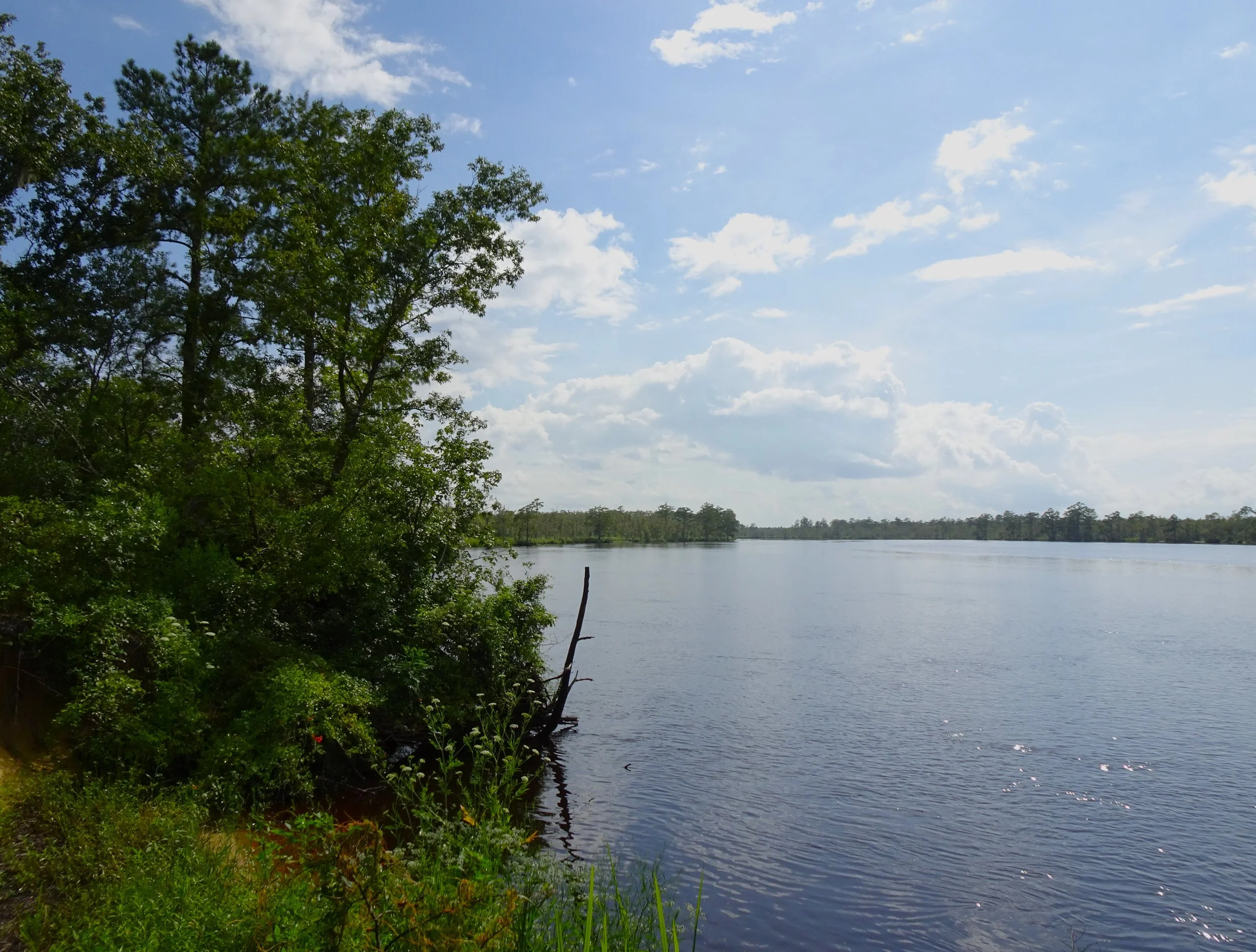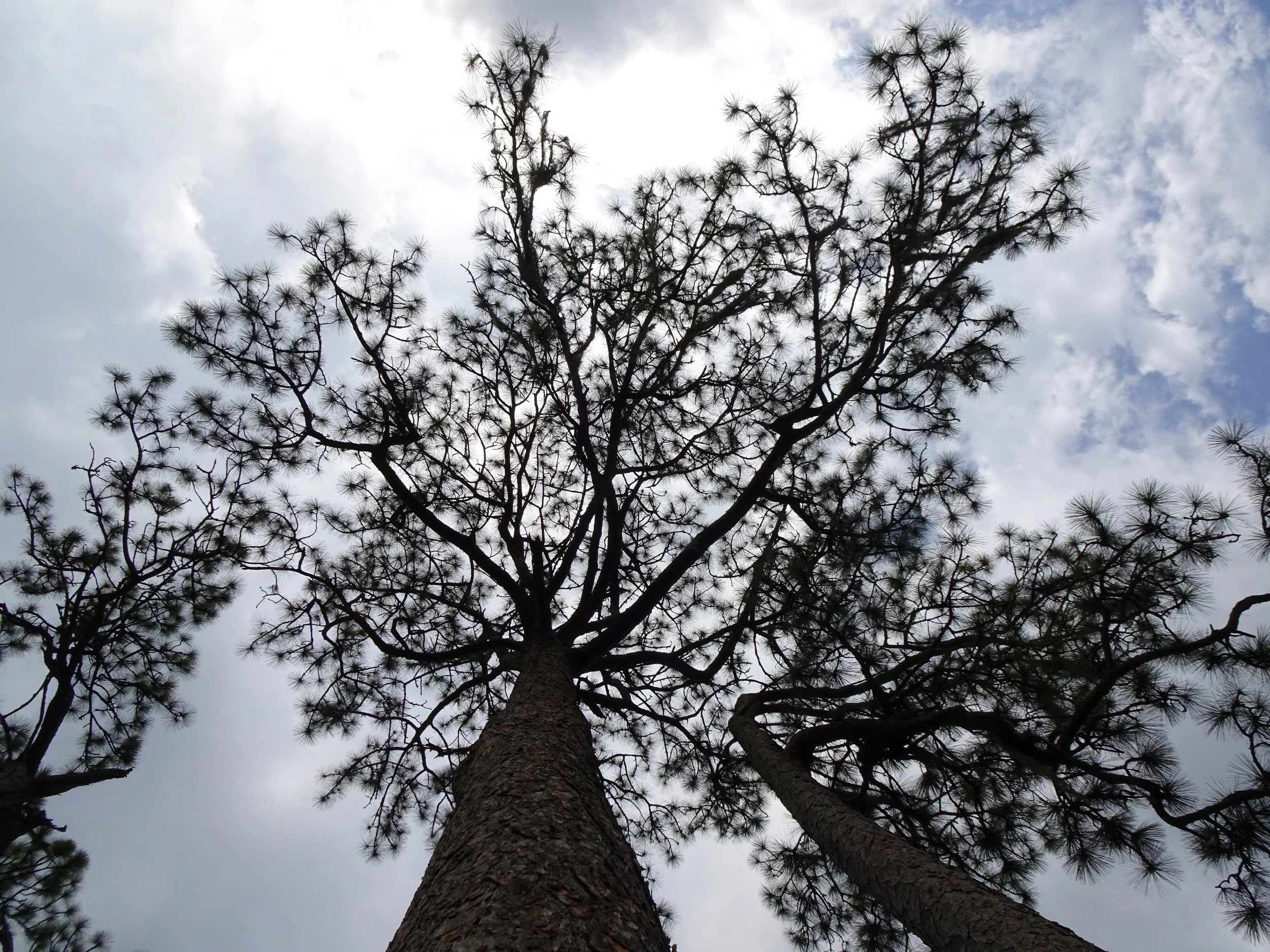
What’s happening
with Sledge Forest?
What’s happening with Sledge Forest?
Over 4000 acres of forest is slated for “by-right” development and its required supporting infrastructure, which does not allow for any public input and requires NO review and/or approval by our County Commission.
This area contains over 3000 acres of jurisdictional wetlands. Trees as tall as 60 feet and some between 350 & 500 years old exist here. It is filled with a diverse ecology including rare and threatened species of both plants and animals.
This project, Hilton Bluffs, would be located next to GE, off Castle Hayne Rd., and is projected to add an additional 30,261 cars per day to an already heavily traveled road. With only one available entrance/exit (Sledge Rd), access through adjacent neighborhoods are being proposed and are of real concern for potential threats and negative impacts of using these narrow, rural, RA zoned roads for such a high volume of traffic.
An EPA designated Hazardous Waste Site is adjacent to the property and these toxic plumes have migrated dangerous toxins and possible carcinogens on to Sledge Forest land and into the water table. There are many questions regarding this that need to be answered to ensure the health and safety of our community before allowing this project to move forward.
Our Mission: Preserving Sledge Forest
Our mission is to protect this irreplaceable ecosystem, safeguard its biodiversity, and ensure the health, safety, and well-being of our community.
Join us in this movement to stop the Hilton Bluffs development, protect this local treasure in conservation, and protect what’s left of our beautiful natural areas in New Hanover County ... before it’s too late.
*What about those zoning laws & regulations?
What is RA Zoning?
Sledge Forest and the surrounding community is zoned “Rural Agriculture”. According to the NHC Unified Development Ordinance, the purpose of RA is: 1) to allow very low density, single family residential development that is compatible in scale and character to rural and agricultural settings. 2) Encourage rural farming activities and the preservation of open space. 3) Preserve the rural areas and development patterns of NHC through the continued review of the impact of proposed development.
The district is designed to promote exurban. low density residential development, not requiring public infrastructure or services while maintaining prime farm land and a rural lifestyle.
RA zoning allows for one residential dwelling per acre.
How is the proposed Hilton Bluffs development permitted to deviate from RA zoning regulations? The developer applied as a “Performance Subdivision”, which allows them to factor in unbuildable wetland acreage, leading to a density that exceeds what the zoning ordinarily allows—4-5 dwellings per usable acre as opposed to one dwelling/acre. Concerns have been raised that this exploits a loophole in RA zoning laws. This also allows them to bypass a rezoning process that would require public input, Planning Board review, and County Commissioners approval, effectively becoming a “by-right” development despite its incompatibility with the NHC purpose and designation of the Rural Agriculture District.
Let’s talk about “by-rights”…
A developer’s “by-right” ability to develop their property isn’t absolute and shouldn’t be allowed to proceed unchecked when it brings numerous potential negative impacts to the established existing community for several reasons:
Property Rights vs. Community Rights: While developers have the right to use their property, that right isn’t a blank check. It must be balanced against the rights of the existing community to peace, quiet, clean air and water, health, safety, and the preservation of their quality of life. One person’s property rights shouldn’t infringe upon the fundamental rights and well-being of many others. Zoning laws and regulations exist to manage that balance.*
Externalities: The developer might profit, but the potential negative impacts - increased traffic, loss of green space, insufficient supporting infrastructure, noise, threat to health & safety, potential decrease of property value, and disruption of community character - are often borne by the community. These are called externalities - costs that the developer doesn’t pay but the community does. Unregulated development allows the developer to privatize the gains while socializing the losses.
Long-Term vs Short-Term: Developers often have a short-term focus, looking to maximize immediate profit. They may not have a vested interest in the long-term health and sustainability of the community. Residents, on the other hand, are invested in the long haul and have a stake in preserving their neighborhood for themselves and future generations.
Democratic Process: Communities have the right to a voice in how their neighborhoods are shaped. Zoning regulations, public hearings, and environmental impact assessments are meant to ensure that development decisions consider the broader community impact, not just the developer’s bottom line. “By-right” development can sometimes bypass this democratic process, silencing the community’s concerns.
Health and Safety: Some negative impacts, like traffic congestion and environmental pollution, can directly effect the health and safety of residents. Ignoring these impacts in the name of “by-right” development is irresponsible and potentially dangerous.
In short, “by-right” doesn’t mean “the right to ignore everyone else”. Responsible development considers the needs and well-being of the entire community, not just the developer.
"We cannot live only for ourselves. A thousand fibers connect us with our fellow men." – Herman Melville

Top 10 Reasons to Oppose Developing Sledge Forest
10. Destruction of approximately 1000 acres of irreplaceable forest, and all the wildlife that need to make their homes there, for development of over 4000 homes-that’s more than 4 homes per acre in an area zoned Rural Agriculture (RA).
9. Potential disturbance, disruption, and destruction of over 3000 acres of jurisdictional wetlands on the proposed site.
8. This area is in a flood prone area, surrounded on three sides by tidal waters. The catastrophic impacts caused by flooding is often due to clear-cutting and overdevelopment.
7. The Natural Heritage Program has designated this an area of National Significance. It is the last large swath of natural forest in our county.
6. A designated Hazardous Waste Site from the adjacent property has migrated and it's toxic plume could be a potential threat if disturbed.
5. Over 30,000 car trips per day will be generated from this huge development, flowing on to Castle Hayne Rd, a two-lane road over-burdenend road with an F rating.
4. Sledge Rd. is presently the only access. Connecting roads have been proposed through private adjacent neighborhoods without input from homeowners.
3. The area’s schools, hospital, emergency services, and roads cannot handle 4000 more families without the proper infrastructure in place first.
2. The project does not allow for any public input or review by our elected officials, despite its profound consequences and potential negative impacts.
#1 Reason to Oppose Development of Sledge Forest:
The citizens of this community deserve to have their voices heard. The many potential negative impacts of this project to our neighborhoods, our environment, our health & safety, and our quality of life warrants public input and county review.
“The way to right wrongs is to turn the light of truth upon them.” – Ida B. Wells
Contact us.
Have questions or want to get involved? Send us a message and we’ll get back with you as soon as possible.




